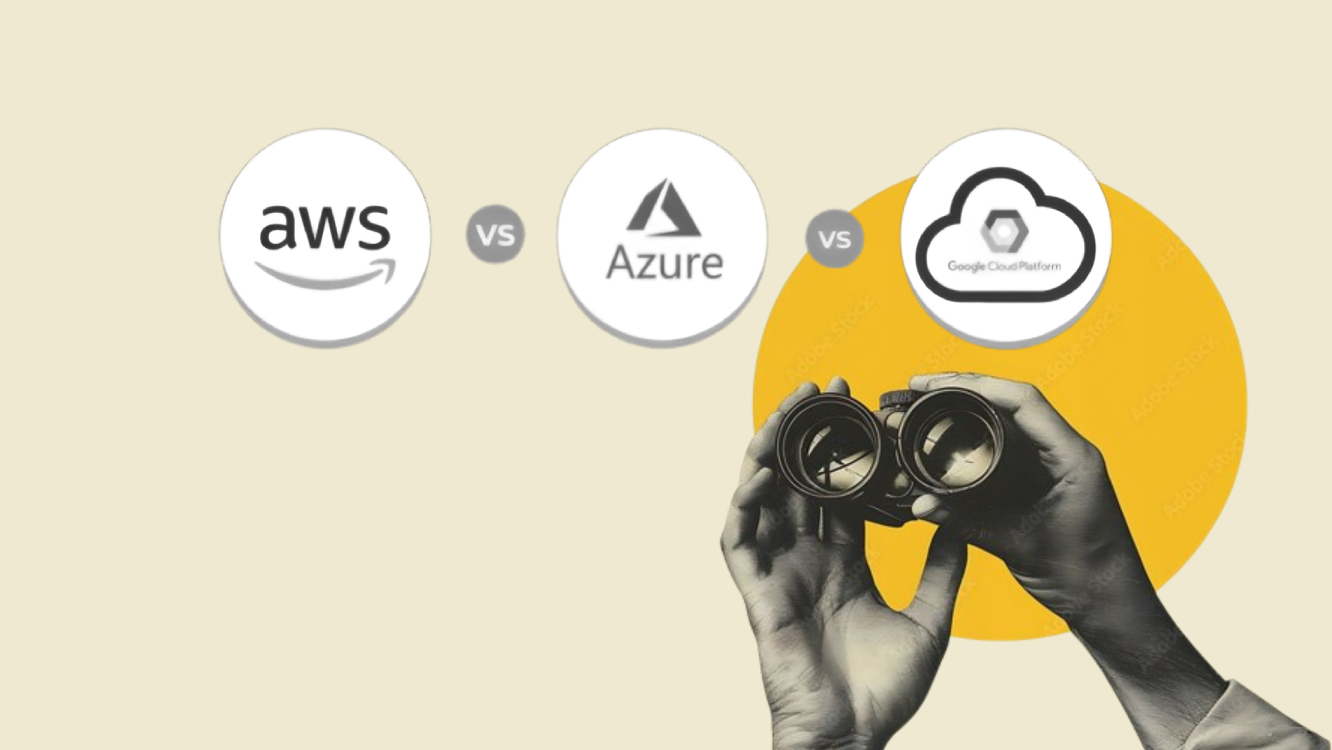In today's AI-driven world, choosing the right machine learning (ML) platform is a strategic decision that directly impacts innovation speed, data science efficiency, and long-term cost control. AWS SageMaker is one of the most well-known solutions on the market, but how does it compare to competitors like Vertex AI, Azure ML, and DataRobot?
This article provides an in-depth comparison of leading ML platforms, focusing on AutoML capabilities, big data handling, and integration strength — helping businesses and developers alike make informed technology choices.
What Is Amazon SageMaker?
Amazon SageMaker is a fully managed ML service developed by Amazon Web Services (AWS). It enables data scientists, analysts, and developers to build, train, and deploy machine learning models at scale without managing underlying infrastructure. From automated data labelling to model monitoring, SageMaker offers end-to-end support for the full ML lifecycle.
Key Strengths of SageMaker
- Deep integration with AWS cloud ecosystem
- Built-in AutoML (Autopilot) for fast model generation
- Pre-built algorithms and Jupyter support
- Managed hosting and CI/CD pipelines for ML
Yet, with rapid market evolution, SageMaker is far from the only game in town.
Why Look for SageMaker Alternatives?
Although SageMaker is powerful, it may not always align with every organisation's needs. Common reasons to explore alternatives include:
- More cost-effective tools for small teams
- Simpler interfaces for non-coders
- Better big data integration with Apache Spark (e.g., Databricks)
- Tighter integration with specific cloud platforms (e.g., GCP, Azure)
Platform Comparison Criteria
To provide a structured overview, we evaluate each platform based on three core dimensions:
1. AutoML Capabilities
How well the platform supports automated model building with minimal coding.
2. Big Data Handling
The ability to process and model large-scale datasets efficiently.
3. Integration Score
How well the platform integrates with other services in the cloud or data stack.
Leading ML Platforms Compared
Platform-by-Platform Breakdown
1. Vertex AI (Google Cloud)
Vertex AI stands out with seamless integration into Google’s AI ecosystem. It combines AutoML and custom model training under one unified API, making it a strong pick for developers who rely on BigQuery, TensorFlow, or Google Kubernetes Engine.
Best for: Developers who want scalable AI tied into Google Cloud infrastructure.
2. Microsoft Azure ML
Azure ML is ideal for enterprises already invested in the Microsoft ecosystem. With robust AutoML features, integrated MLOps tools, and support for responsible AI, it’s a strong enterprise-grade platform.
Best for: Large organisations using Azure services.
3. Dataiku
Dataiku targets a broader audience with its no-code/low-code environment. It provides a visual interface to create ML workflows, making it perfect for business analysts and data-savvy non-developers.
Best for: Cross-functional teams seeking collaborative ML projects.
4. Databricks
Built on Apache Spark, Databricks is the go-to platform for big data analytics combined with machine learning. Its notebooks, real-time processing, and MLflow integration enable full data + ML orchestration.
Best for: Data engineers and teams dealing with large, distributed datasets.
5. DataRobot
As one of the pioneers in automated machine learning, DataRobot accelerates the model development lifecycle and simplifies deployment. Its enterprise AI features include explainability and governance.
Best for: Business teams prioritising speed and automation over full custom control.
6. H2O.ai
H2O offers both open-source tools and enterprise AutoML features. It's lightweight, flexible, and cost-efficient — suitable for smaller businesses or organisations looking for transparency and control.
Best for: Startups and mid-size businesses preferring open standards.
7. Alteryx
Alteryx focuses on empowering non-technical users. Its drag-and-drop interface simplifies data preparation, feature engineering, and model building.
Best for: Data analysts with limited coding experience.
8. IBM Watson Studio
Watson Studio caters to enterprise customers needing secure, scalable ML solutions. It integrates with IBM Cloud and provides strong governance tools alongside AutoAI.
Best for: Enterprises already invested in IBM infrastructure.
AWS SageMaker in Perspective
While SageMaker still holds strong in terms of infrastructure scale, built-in algorithms, and security compliance (ISO, GDPR, HIPAA), it may not be as user-friendly or cost-efficient for startups, small teams, or businesses preferring GCP or Azure.
That said, SageMaker's flexibility, especially with Docker containers and BYO (bring your own) model support, makes it a robust option for complex ML workflows.
Final Thoughts
Selecting the best ML platform is not about the most features — it’s about choosing what fits your use case, budget, and team skillset. SageMaker continues to be an enterprise powerhouse, but with alternatives like Vertex AI and Dataiku becoming more accessible and feature-rich, the decision has never been more nuanced.
Make sure you assess each tool not just on technical merit but also on ease of use, team readiness, and long-term vendor lock-in implications.
Whether you are building the next-gen AI product or optimising your internal analytics pipeline, the platform you pick will shape your velocity and capabilities for years to come.
References
- "Amazon – Press Room – Press Release". phx.corporate-ir.net. Archived from the original on October 15, 2015. Retrieved June 8, 2017.
- "About AWS". September 2011. Archived from the original on October 5, 2012. Retrieved May 16, 2012.
- "AWS announces next CEO". aboutamazon.com (Press release). May 14, 2024. Archived from the original on May 14, 2024. Retrieved May 14, 2024.
- Haranas, Mark (August 1, 2022). "AWS CISO On Why Its Security Strategy Tops Microsoft, Google". CRN. Archived from the original on April 28, 2023. Retrieved April 28, 2023.
- "AWS segment sales increased 19% year-over-year to $107.6 billion". About Amazon. February 6, 2025.
- "NICE – an AWS Company". nice-software.com. Archived from the original on February 18, 2021. Retrieved January 4, 2019.
- "AWS Customer Agreement". Amazon Web Services, Inc. Archived from the original on March 30, 2007. Retrieved April 6, 2016.
- "AWS Global Infrastructure". December 22, 2016. Archived from the original on December 28, 2013. Retrieved December 22, 2016.
- "What is Cloud Computing by Amazon Web Services | AWS". Archived from the original on December 25, 2018. Retrieved July 17, 2013.
- "Huge Cloud Market Sees a Strong Bounce in Growth Rate for the Second Consecutive Quarter". Synergy Research Group. April 30, 2024. Archived from the original on May 13, 2024. Retrieved May 21, 2024.
- Roberts, Daniel (May 24, 2016). "Here's why Amazon stock is up 42% in just 3 months". Yahoo Finance. Archived from the original on July 25, 2020. Retrieved January 15, 2017.
- Novet, Jordan (February 1, 2018). "Amazon cloud revenue jumps 45 percent in fourth quarter". CNBC. Archived from the original on November 12, 2020. Retrieved February 25, 2018.
- Furrier, John (November 30, 2020). "Exclusive with AWS chief Andy Jassy: The wakeup call for cloud adoption". Archived from the original on February 15, 2021. Retrieved February 18, 2021.
- Balakrishnan, Anita (April 12, 2017). "AWS CEO Andrew Jassy’s 2016 pay hits $35.6 million". CNBC.com. Archived from the original on February 24, 2020. Retrieved June 8, 2017.
- Miller, Ron. "Amazon launches autoscaling service on AWS". TechCrunch. Archived from the original on August 17, 2020. Retrieved January 18, 2018.
- "New AWS Auto Scaling – Unified Scaling For Your Cloud Applications". Amazon Web Services. January 16, 2018. Archived from the original on November 19, 2020. Retrieved January 18, 2018.
- "AWS launches Arm-based servers for EC2". TechCrunch. Archived from the original on December 4, 2020. Retrieved November 27, 2018.
- "AWS launches a beta stance for satellites as a service". TechCrunch. Archived from the original on November 10, 2020. Retrieved November 28, 2020.





















Discussion